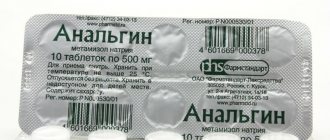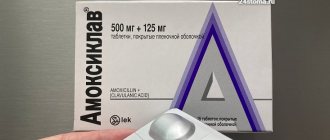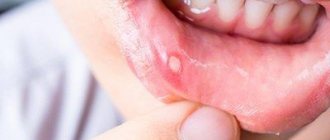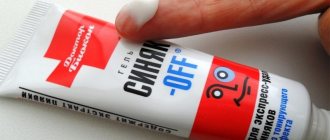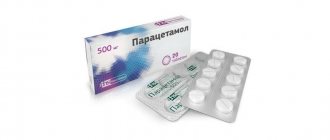Hemostatic (antihemorrhagic, hemostatic) drugs are a group of drugs that are used to stop bleeding (hemorrhages) and prevent excessive blood loss.
Normally, blood is a fluid liquid - a suspension of formed elements (erythrocytes, leukocytes, platelets) in plasma. However, during bleeding, blood is able to change its rheological (fluid) properties - it becomes excessively thick and viscous, and then solidifies at the site of damage to the vessel wall (coagulates), forming a clot (thrombus). The thrombus closes the lumen of the wound and thereby prevents further bleeding and loss of blood from the body.
In case of extensive bleeding or in diseases that are accompanied by a violation of the formation of blood clots, the blood does not have time or is not able to clot in time. This leads to excessive blood loss, and then to shock, oxygen starvation of organs (especially the brain and heart) and the development of various kinds of negative consequences, including death. In this case, hemostatic drugs are used.
Indications for use
Hemostatic drugs are used for conditions associated with blood clotting disorders and bleeding.
Fibrinolysis inhibitors are used to stop severe bleeding during operations (especially on the heart, lungs, large vessels), extensive injuries, birth hemorrhages, reduced blood clotting in liver diseases, as well as in case of overdose of fibrinolytic drugs (fibrinolysin, streptokinase, alteplase, urokinase, tenecteplase and etc.).
Aprotinin is additionally used for diseases of the pancreas: acute pancreatitis (including alcoholic), severe injuries and pancreatic cancer.
Vitamin K preparations are used for bleeding associated with vitamin K deficiency in the body: hemorrhagic syndrome of newborns, liver diseases (cholelithiasis and obstructive jaundice) and intestinal diseases (enterocolitis, Crohn's disease). In addition, vitamin K preparations are used for bleeding caused by an overdose of indirect anticoagulants - warfarin, acenocoumarol, phenindione.
Herbal hemostatics are indicated for uterine bleeding (menorrhagia), minor bleeding from small vessels of the stomach and intestines.
Hemostatic drugs for local use are used to stop capillary and parenchymal bleeding (from internal organs) during open abdominal operations.
Etamsylate is used for the prevention and treatment of surgical bleeding, as well as for uterine, nosebleeds, bleeding gums due to periodontal disease, and gingivitis.
Eltrombopag and recombinant thrombopoietin are indicated for the treatment of idiopathic thrombocytopenic purpura - a chronically low level of platelets in the blood, which is dangerous due to frequent bleeding - when the spleen is removed.
Emicizumab is used to treat hemophilia, an inherited disease associated with blood clotting disorders and life-threatening bleeding.
Clotting factor drugs are used for severe, extensive bleeding, as well as for the treatment of hemophilia.
Types of hemostatics
Hemostatic agents are divided into resorptive and local agents. Hemostatic effect of hemostatic agents
- resorptive action occurs when drugs of this group are introduced into the blood, and
- local action - in direct contact with bleeding tissues.
Based on their effect on the hemostasis mechanism, hemostatic agents of both groups are divided into specific and nonspecific agents.
Specific products contain blood clotting components or substances that directly affect coagulation. Specific resorptive drugs include platelet-rich plasma, erythropoietin, which stimulates the formation of red blood cells, etc.
Nonspecific agents have an indirect effect on the blood coagulation system - adrenaline (or epinephrine) locally, which constricts blood vessels, hydrogen peroxide.
Depending on the nature of the bleeding, the characteristics of the patient and the location of the wound on the body, the following are used as local hemostatic agents in modern medicine:
- synthetic or fibrin glue (sealant);
- gelatin-based products;
- oxidized reduced cellulose.
Classification of hemostatic drugs
Hemostatic drugs are classified into:
- fibrinolysis inhibitors: amino acids (tranexamic acid, aminocaproic acid), protease inhibitors (aprotinin);
- vitamin K preparations: menadione, phytomenadione;
- herbal preparations: liquid extract of water pepper, nettle leaves, yarrow herb;
- hemostatic agents for local use: thrombin, fibrinogen, Ambien, calcium chloride;
- other hemostatic drugs for systemic use: etamsylate, eltrombopag, emicizumab, recombinant thrombopoietin.
In addition, preparations of proteins that regulate blood coagulation - coagulation factors II, VII, VIIa, VIII, IX, X and their combinations, von Willebrand factor, nonacog alpha - have a hemostatic effect.
Publications on the problem of local bleeding in the work of dentists in outpatient clinics and clinics were analyzed. There has been a significant increase in the number of research data over the past 30 years. The relevance of the problem for solving the issues of duration of treatment, reducing the morbidity of dental procedures, introducing new medical technologies, increasing the quality and accessibility of dental services is reflected.
Modern dentistry is one of the actively developing areas of medical activity, which is associated both with the growing demand of the population for this type of service, and with the introduction of modern equipment, new technological techniques, improvement of drug supply for the treatment process, and increased availability of dental services. At the same time, special attention is paid to the completeness of the provision of specialized dental care in outpatient settings, which, in turn, presupposes the adaptation of the most advanced treatment and diagnostic technologies to these conditions, as well as the sufficiency of the pharmacotherapeutic effect of the drugs used.
One of the leading and historically oldest problems in dentistry, as well as medicine in general, is the problem of stopping bleeding. It is equally important in the work of dentists of all specialties - therapists, surgeons, orthopedists, orthodontists, periodontists. In outpatient work, the dentist solves the problem of stopping superficial (capillary, mixed, external, primary, mechanical) bleeding in almost every second patient.
Bleeding is classified by source (arterial, venous, capillary, mixed), direction (internal, external), time of occurrence (primary - at the time of injury, secondary - some time after injury), mechanism of occurrence (mechanical, neurotrophic) [2]. A person has his own protective-adaptive mechanisms aimed at preventing (minimizing) blood loss - hemostasis. The hemostatic system is a highly organized biological system of the body. The separation of hemostasiology into a separate branch of medical knowledge is due to its very important role [8].
The coagulological blood system is a complex multicomponent biocybernetic complex that ensures the preservation of the integrity of the human body by constantly maintaining the liquid state of the blood, the formation of targeted thrombosis according to the demand principle, and the activation of reparative processes in places of vascular and tissue damage [4, 5, 7] . The functioning of the hemostatic system largely determines the efficiency of blood supply to tissues, the prevention and relief of hemorrhages, thrombosis, ischemia, and organ infarctions, and the protection of the body from the dissemination of bacteria, toxins, and proteolysis products from the lesion [10].
In the work of dentists, issues of stopping bleeding affect the complexity and duration of any procedure, affect the view within an already small surgical field, sometimes jeopardize the very possibility of performing a dental procedure, and can lead to postoperative complications: secondary bleeding, inflammatory processes, depressurization of restorations and orthopedic structures. Bleeding prolongs treatment time, leads to additional suffering for the patient, increases labor costs and, of course, affects the economic efficiency of specialists.
Various treatment methods have historically been used to stop bleeding, ranging from dressings and cauterization to vessel ligation and the use of a variety of local and systemic hemostatic agents [2].
At the prehospital stage, systemic hemostatic agents are used very rarely - according to indications, since they are administered mainly parenterally and have significant drawbacks. In addition, the use of systemic hemostatic agents in a clinic setting is an expensive procedure due not only to their high price, but also to the need for careful laboratory monitoring.
In clinical practice, traditional methods of local hemostasis include: mechanical - tamponade, ligation or suturing of a bleeding vessel, suturing a damaged organ; physical - hot solution of 0.9% sodium chloride, electrocoagulation, local hypothermia, laser, plasma scalpel; chemical - cyanoacrylate adhesives, modified cellulose, collagen, gelatin, etc.; biological - suturing organs and tissues to the bleeding surface, applying extracts and emulsions from organs and tissues [2]. The most common currently is the gradation of local hemostasis techniques into mechanical, thermal and chemical. More often, including dentists, they use chemical methods.
The problem of bleeding control occurs at all stages of dental care: preoperative assessment and identification of risk factors for bleeding, intraoperative (perioperative) bleeding control and management of postoperative bleeding [31].
Most authors attach great importance to the preoperative stage, which includes primary prevention measures. They begin with planning care for each individual patient. Knowledge of the basic principles of planning allows the doctor to choose the optimal treatment methods, makes it possible to determine priorities in the provision of each type of care and the volume of necessary procedures [1]. In well-equipped dental institutions, computer planning is used to resolve issues of individual labor-intensive dental interventions [13].
In the preoperative prevention of bleeding, a detailed medical history, information about general somatic status, and identification of risk factors come to the fore [6].
Anamnesis regarding previous injuries and surgical interventions is very important. They themselves can represent no less important test of the state of the hemostatic system than laboratory tests [26]. Previously, it was generally accepted that blood clotting in women during menstruation decreases, so invasive dental procedures were not recommended during this period. Research in recent years has shown that bleeding that occurs after tooth extraction during menstruation is more often associated with local causes [23].
When planning a dental service where there is a possibility of local bleeding, the age of the patients should also be a concern. Older people may be considered at risk because they often experience changes in the physical properties of the blood and there is ignorance or underestimation of the role of the medications they take [30]. A tendency to bleeding is observed in persons suffering from hypertension, other diseases of the cardiovascular system, and liver. When collecting anamnesis, special attention should be paid to identifying diseases characterized by impaired blood clotting or damage to the vascular system. It is necessary to clarify the medications that the patient is taking: indirect anticoagulants that suppress the function of prothrombin formation by the liver (neodicoumarin, phenylin, syncumar), and direct anticoagulants - heparin. The possibility of developing primary bleeding can also be affected by other drugs - acetylsalicylic acid and a large number of modern drugs that contain it, as well as paracetamol, nitroglycerin, diuretics, digitalis, antibiotics, sulfonamides, antimalarials, hypnotics, antiepileptic and psychotropic substances , analgesics, etc. [23, 26].
Thus, the above analysis of literature data shows that at all stages of the dental treatment and preventive activities in outpatient clinics and clinics, an integrated approach to the prevention and treatment of post-traumatic bleeding should be implemented, which will help solve this complex problem and thereby guarantee the quality of care.
REFERENCES 1. Aleksandrova L. L., Pustovoitova N. N., Yurchuk E. N. Treatment planning in therapeutic dentistry: Educational method. manual.—Minsk, 2008. 2. Ball S.V. // Directory of general practitioners. - 2009. - No. 6. - P. 71-77. 3. Bailey D. X., Fisher D. E. // Clinical. dentistry.— 2004.— No. 2.— P. 34—42. 4. Vasiliev S.A. Vorobyov A.I., Gorodetsky V.M. // MateriaMedia. - 1997. - No. 1. - P. 23-36. 5. Vorobyov P. A. Current hemostasis. - M., 2004. 6. Grokholsky A. P. Medical errors in dentistry. - Kyiv, 1994. 7. Tsarev V. P. Hematological syndromes in dentistry: Educational method. manual. - Minsk, 2010. 8. Kamyshnikov V. S. Hemostasiology in clinical and laboratory practice: Textbook. manual for students of the postgraduate system. honey. education.—Minsk, 2011. 9. Zilber A.P. Clinical physiology in anesthesiology and resuscitation. - M., 1984. 10. Zubovskaya, E. T., Svetlitskaya S. G. Hemostasis system. Theoretical foundations and research methods: Practical. manual. - Minsk, 2010. 11. Shebeko L. V. // Organization, prevention, new technologies and rehabilitation in dentistry: Materials of the IV Congress of Dentists of Belarus. - Vitebsk, 2000. - P. 432-434. 12. Kazeko L. A. // Health. Belarus. - 1993. - No. 2. - P. 30-32. 13. Stachulla S. // New in dentistry. - 2012. - No. S. - pp. 14-26. 14. Maltseva M.V. Correction of the mucous membrane of the gingival margin when filling teeth: Abstract of thesis. dis. ...cand. honey. Sciences. - M., 1999. 15. Zeytagov O. G. // Dentistry for everyone. - 1999. - No. 2/3. - P. 28-29. 16. Petrikas A. Zh., Zakharova E. L. // Dentistry. - 2004. - No. 2. - P. 17-18. 17. Ushakov A.I. // Dentistry. - 2012. - Volume 91, No. 1. - P. 48-53. 18. Polozova O. A. Retraction and correction of the gingival margin during dental restoration: Abstract of thesis. dis. ...cand. honey. Sciences.— Tver, 2006. 19. Poloneichik N. M. // Sovrem. dentistry.— 2003.— No. 2.— P. 10—13. 20. Ryakhovsky A. N., Muradov M. A. // Maestro of Dentistry. - 2003. - No. 2. - P. 4-7. 21. Gudkova E.I. // Bel. honey. journal - 200S. - No. 2. - P. 33-35. 22. Dentistry: Textbook / Ed. T. G. Robustova. - M., 2008. 23. Timofeev A. A. Maxillofacial surgery: A textbook for students of higher medical education. textbook institutions.— Kyiv, 2010. 24. Ushakov R.V., Tsarev V.N. // Ros. dentist journal - 2003. - No. 6. - P. 40-44. 25. Ushakov R.V., Tsarev V.N., Chuvilkin V.I. // Dentistry for everyone. - 1999. - No. 1. - P. 24-27. 26. Fermilen J., Ferstate M. Hemostasis. - M., 1984. 27. Filipchuk D. G., Yadchenko V. N., Timashkova L. I. // Organization, prevention, new technologies and rehabilitation in dentistry: Materials IV Congress of Dentists of Belarus. - Vitebsk, 2000. - P. 143-145. 28. Chistyakova G. G., Lazareva I. S. // Dentistry. journal - 2007. - No. 4. - P. 321-323. 29. Osborn T. R. // J. Oral. Maxillofac. Surg.—1985.—Vol. 43, No. 10.— R. 767-769. 30. Canigral A. // Med. Oral. Patol. Oral. Cir. Bucal.—2010.—Vol. 15, No. 6.— P. 863—868. 31. Kamoh A., Swantek J. // Dent. Clin. North. Am.—2012.—Vol. 56, No. 1.— P. 17—23. 32. McBee WL, Koerner KR // Dent. Today.—200S.—Vol. 24, No. 3.— P. 62—65. 33. Goldman D. R // Oral. Surg. Oral. Med. Oral. Pathol.—1973.—Vol. 35, No. 4.— P. 472—474. 34. Julius LL // J. Oral. Maxillofac. Surg.—1982.—Vol. 40, No. S.—P. 285—286. 35. Pribitkin ED, Boger G. // Arch. Facial. Plast. Surg.—2001.—Vol. 3, No. 2.— P. 127—132. 36. Spolarich AE, Andrews L. // J. Dent. Hyg.—2007.—Vol. 81, No. 3.—P. 67.
Received 12/23/13.
Address for correspondence: Tagieva Farida Raufovna.
Belarusian State Medical University. 220116, Minsk, Dzerzhinsky Ave., 83; sl. tel. (8-017) 226-S0-92. Key words:
outpatient care, local hemostatic agents, local post-traumatic bleeding, dentistry
Author(s):
Tagieva F. R.
Medical institution: Belarusian State Medical University
Diagnostics
Primary diagnostic methods:
- measurement of pressure level, pulse rate;
- external examination, examination of the oral cavity, tooth extraction sites.
During the examination, the patient will be asked questions about his health and the time of occurrence of complications. It is necessary to determine the cause of the problem, for example, whether the patient has eaten or drunk, or whether there is a fever. In some cases, differential diagnosis will be carried out to determine the presence of the following diseases - diabetes, hypertension, diathesis, hepatitis, leukemia during an exacerbation.
Recommendations for the patient
The patient can cope with the complication of bleeding on his own; to do this, the following recommendations must be followed:
- taking antihypertensive medications for high blood pressure;
- installation of cotton or gauze swabs;
- dietary restrictions (hot foods should be excluded, as should solid foods);
- eliminating mechanical impact on the socket area;
- applying cold compresses.
Treatment methods
Various methods are used for therapy, in most cases local treatment helps. In case of severe, prolonged bleeding, the patient is admitted to a hospital, where intensive infusion with drip administration of drugs is carried out. Methods of local therapy depend on the characteristics of the disease. Usually the wound is cleaned, clots are removed, dried with tampons and a turunda is placed. When removing a multi-rooted tooth, each hole is processed separately.
After treatment, stitches are applied and a tampon is placed on top, which the patient must press with his teeth. The doctor observes the patient for about one hour, after which the tampon can be removed. if bleeding continues, apply a cold compress with ice, and apply a clean tampon to the wound area. The turunda is removed from the hole after five to six days; it is not recommended to do this earlier in order to prevent complications. It also cannot be left for a long period, as healing will be slow.
To stop bleeding, use:
- thread ligation (vascular ligation);
- squeezing tissue with forceps and applying a tampon;
- application of iodoform gauze;
- use of statin powder or hemostatic sponge;
- use of caprofer or catgut.
If the bleeding is caused by hypertension, the patient will be prescribed antihypertensive medications. For coagulation pathologies, the following types of coagulants are prescribed:
- vikasol to improve coagulation and protein synthesis, administered orally or intramuscularly;
- aminomethylbenzoic acid with a hemostatic effect, prescribed in the form of tablets, intramuscular and intravenous solutions, sponges for local bleeding control;
- Ambien for intravenous administration, contains aminomethylbenzoic acid;
- etamsylate to stimulate blood clotting, reduce vascular permeability, prescribed in the form of tablets, solutions and intravenous, intramuscular administration;
- dicinone (contains etamsylate), prescribed for oral or intramuscular, intravenous administration;
- calcium chloride (in the form of injections, intravenous influence, tablets);
- aminocaproic acid to dissolve clots and prevent blood clots.
Ascorutin and ascorbic acid, necessary to normalize coagulation and restore vascular permeability, can also be prescribed.
Prevention
To prevent problems after tooth extraction, it is recommended to keep the cotton swab in place for at least half an hour. If the patient has problems with blood clotting, the packing time may be increased. By the degree of blood saturation of the tampon, you can determine whether there is bleeding or not, and whether it is necessary to keep the cotton wool for a longer time. During the day you should refrain from taking hot drinks and foods, and do not rinse your mouth.
Alveolar bleeding should not be ignored, as it can cause further deterioration. If a complication occurs more than an hour after tooth extraction, the problem requires close attention from a doctor. The same applies to situations in which bleeding resumes some time after the manipulation.
Causes
Reasons for the development of alveolar bleeding:
- systemic disorders;
- damage to the alveoli, interradicular septum;
- tissue ruptures, crushing, other damage to the soft tissue of the gums;
- premature cessation of the action of an anesthetic drug containing adrenaline, which causes vasoconstriction;
- inflammatory processes in the area of tooth extraction;
- alveolitis, purulent melting of tissues;
- vascular damage%
- disruption of the integrity of the blood clot due to mechanical intervention due to the fault of the patient;
- hemangioma (vascular erosive tumor).
Systemic disorders that can lead to the development of alveolar bleeding include:
- hypertension;
- infectious diseases;
- scurvy;
- vascular pathologies;
- hemorrhagic diathesis;
- blood diseases that negatively affect clotting;
- hepatitis.
